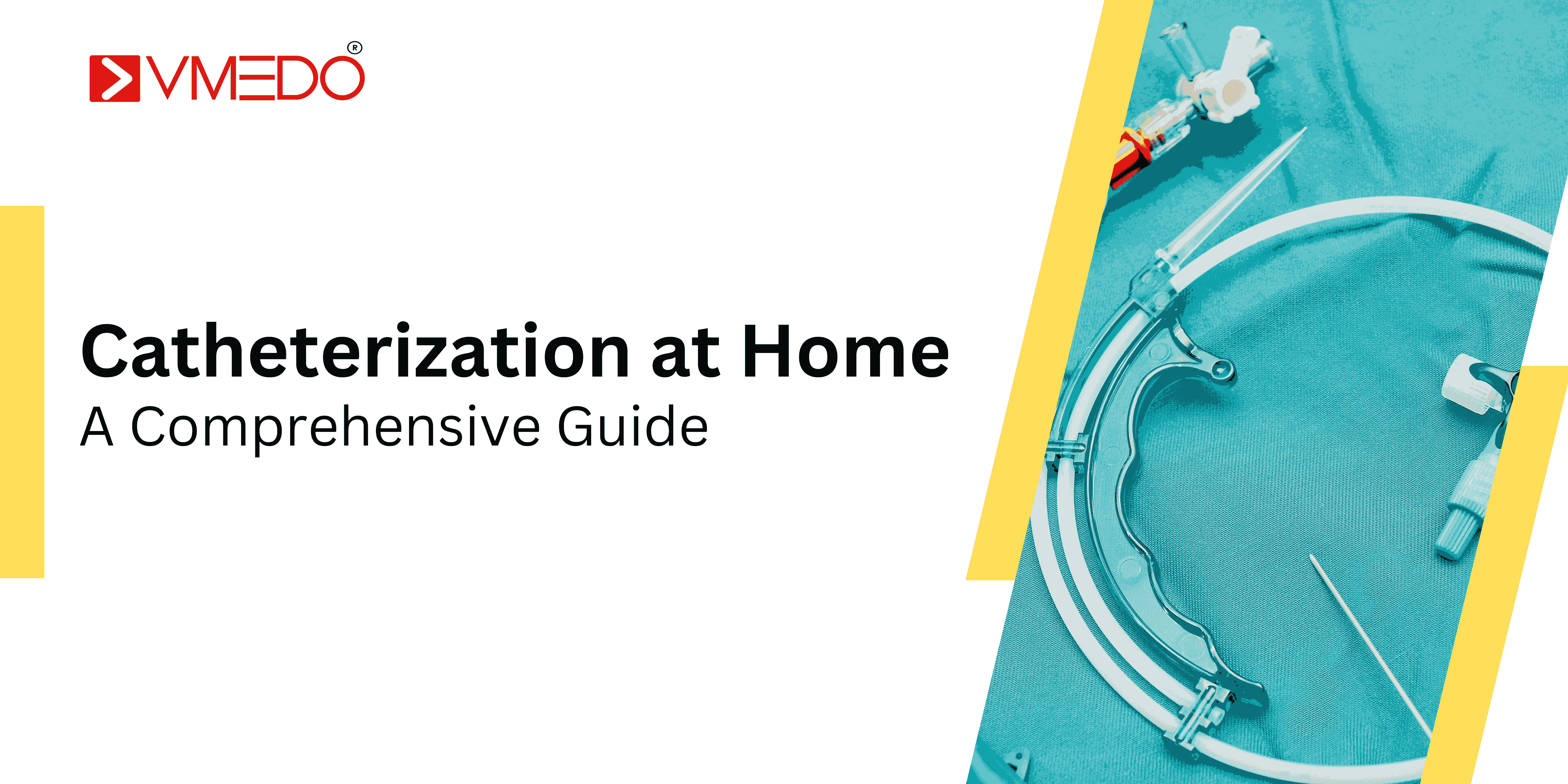Need expert catheterization care at home? VMEDO offers professional, safe, and hygienic catheterization services in the comfort of your home. Our trained nurses ensure pain-free insertion, infection prevention, and proper catheter management for patients needing short-term or long-term care. Whether it’s indwelling, intermittent, or suprapubic catheterization, we provide personalized assistance tailored to your needs. Avoid hospital visits, reduce infection risks, and ensure the best care for your loved ones. Book a hassle-free catheterization service at home with VMEDO today! Call us now on 9343180000 for expert medical care at your doorstep.
In this comprehensive guide, we will cover everything parents and caregivers need to know about catheterization at home, including its types, procedure, safety tips, risks, and best practices.
Understanding Catheterization
What is Catheterization?
Catheterization is a medical procedure that involves inserting a thin, flexible tube called a catheter into the bladder to drain urine when a person cannot do so naturally. It is commonly used for patients with urinary retention, neurological disorders, post-surgical conditions, or mobility issues. Catheterization can be temporary or long-term, depending on the patient’s needs.
Types of Catheters
-
Indwelling Catheter (Foley Catheter)
-
Stays in the bladder for an extended period.
-
Has an inflated balloon to hold it in place.
-
Requires regular cleaning and monitoring.
-
-
Intermittent Catheter
-
Inserted and removed multiple times a day.
-
Suitable for patients with temporary or manageable urinary retention.
-
Reduces the risk of long-term infection.
-
-
Suprapubic Catheter
-
Surgically inserted into the bladder through the abdomen.
-
Used for long-term urinary management.
-
Requires proper wound care to prevent infections.
-
-
External Catheter (Condom Catheter for Males)
-
Fits externally over the penis and drains urine into a collection bag.
-
Less invasive and reduces the risk of infections.
-
When is Catheterization Needed at Home?
Catheterization at home may be required for individuals with the following conditions:
-
Neurogenic bladder dysfunction (due to spinal cord injury, multiple sclerosis, or stroke).
-
Post-surgical recovery requiring urinary management.
-
Chronic urinary retention due to prostate issues or nerve damage.
-
Bladder obstruction caused by tumors or stones.
-
Elderly patients with mobility restrictions or severe incontinence.
Step-by-Step Comprehensive Guide to Performing Catheterization at Home
1. Preparing for the Procedure
Gather the necessary supplies:
-
Sterile catheter (as prescribed by the doctor)
-
Lubricant (water-based)
-
Sterile gloves
-
Antiseptic wipes
-
Urine collection bag (if using an indwelling catheter)
-
Saline solution or sterile water
-
Clean towels
2. Hygiene and Safety Measures
-
Wash hands thoroughly with soap and water.
-
Wear sterile gloves to prevent infections.
-
Clean the genital area with antiseptic wipes before insertion.
-
Maintain a sterile field by avoiding contact with non-sterile surfaces.
3. Inserting an Intermittent Catheter (For Males and Females)
For Males:
-
Position the patient comfortably in a semi-reclined or supine position.
-
Apply lubricant to the catheter tip.
-
Hold the penis at a 45-degree angle and gently insert the catheter into the urethra.
-
Continue inserting until urine starts flowing.
-
Once urine flow stops, slowly remove the catheter.
-
Dispose of the catheter properly and clean the area.
For Females:
-
Position the patient in a semi-reclined or lying position with knees bent.
-
Separate the labia and clean the urethral opening with antiseptic wipes.
-
Apply lubricant to the catheter and insert it gently into the urethra.
-
Once urine starts flowing, hold the catheter in place until the bladder is empty.
-
Slowly remove the catheter and clean the area.
4. Caring for an Indwelling (Foley) Catheter
-
Ensure the catheter is securely taped to prevent accidental pulling.
-
Keep the urine bag below bladder level to avoid backflow.
-
Empty the collection bag every 4-6 hours or when it is half full.
-
Clean the catheter and tubing daily with mild soap and water.
-
Check for signs of infection, such as fever, cloudy urine, or foul odor.
5. Changing a Suprapubic Catheter
-
Sterilize the insertion site with antiseptic solution.
-
Remove the old catheter carefully and insert a new one using sterile technique.
-
Secure the catheter with medical tape and cover the insertion site with a clean dressing.
Preventing Infections and Complications
Catheter-associated urinary tract infections (CAUTIs) are a common risk. Here’s how to minimize them:
-
Use sterile catheters and follow hygiene protocols.
-
Change the catheter as per medical recommendations.
-
Encourage hydration to flush out bacteria.
-
Avoid tugging or pulling on the catheter.
-
Monitor for signs of infection, including pain, fever, or blood in urine.
Managing Common Challenges
1. Catheter Blockage
-
Flush the catheter with sterile saline if allowed by a doctor.
-
Avoid kinking or twisting the tubing.
-
Drink adequate fluids to prevent sediment buildup.
2. Leakage Around the Catheter
-
Check if the catheter size is appropriate.
-
Ensure proper catheter positioning.
-
Seek medical attention if leakage persists.
3. Discomfort and Irritation
-
Use a well-lubricated catheter.
-
Apply barrier creams around the insertion site to prevent skin irritation.
-
Rotate the catheter position slightly to reduce pressure.
When to Seek Medical Help
Caregivers should contact a healthcare provider if:
-
The patient develops a high fever or chills.
-
Urine appears bloody, cloudy, or foul-smelling.
-
There is persistent pain or burning around the catheter site.
-
The catheter is not draining properly despite troubleshooting.
-
The insertion site (for suprapubic catheters) is red, swollen, or leaking pus.



